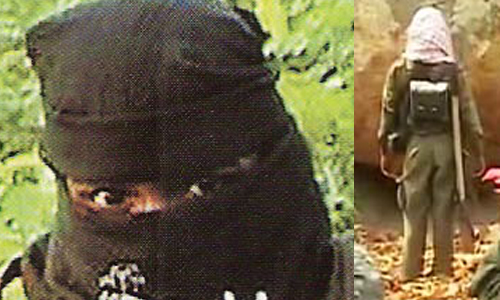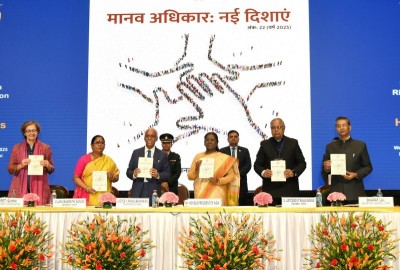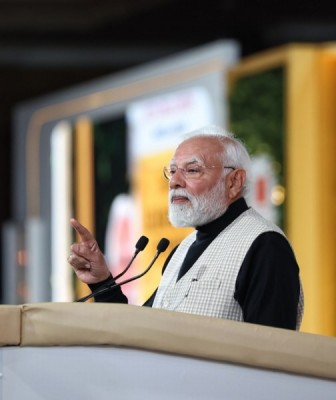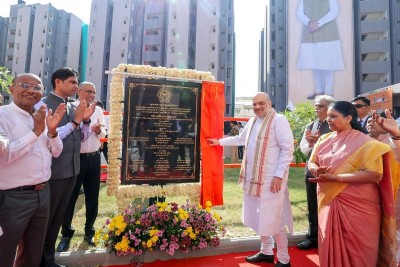
Chhattisgarh:Bastar Division: Final Maoist Bastion
The day before, one Maoist cadre was killed in an exchange of fire with Security Forces (SFs) in the forests of Sukma District. The skirmish took place when a team of the District Reserve Group (DRG), led by Dornapal Station House Officer (SHO) Ajay Sonkar, was out on an anti-Maoist operation in the Dornapal Police Station (PS) area, and a group of Maoists opened indiscriminate fire on the team near Koyabekur village, following which an encounter broke out, Sukma Superintendent of Police (SP), Indira Kalyan Elesela stated. Meda Benjami aka Kukkal Mada, head of a Maoist Janatana Sarkar('people's government' unit) in the Kerlapal area, was killed in the encounter. Elesela added that the deceased was looking after Naxal [Left Wing Extremism (LWE)] activities in about 10 villages of the region. A muzzle loading gun and some ammunition was recovered from the spot.
Meanwhile, on September 1, 2016, one Central Reserve Police Force (CRPF) Constable, Sachin Kumar (27), who had been severely injured in an Improvised Explosive Device (IED) blast in the Sukma District on August 26, 2016, succumbed to his injuries at the All India Institute of Medical Sciences (AIIMS) in New Delhi.
Four days earlier, on August 28, 2016, a composite squad of the DRG and Special Task Force (STF) killed one Maoist cadre during an encounter in the Chandometa forest of Bastar District.
Earlier, on August 26, 2016, the Maoists killed one of their own supporters after producing him before ajan adalat (people's court) in the Sukma District. Commenting on the incident, IGP Kalluri stated, "Rathore (Sandeep Kumar Rathore) was this evening shot dead by armed rebels in the forests near Mukram nullah under Chintalnar Police Station limits. As per records, he was a staunch supporter of (the) Maoists but for the last few months he had started distancing himself from the banned outfit. He had joined the mainstream and was leading a normal life."
On August 24, 2016, one Maoist cadre was killed in an exchange of fire with SF personnel in the Sukma District. The skirmish took place near Ponga Bhejji village when a joint team of STF and the District Force was out on an anti-Maoist operation in the Dornapal PS area. Giving details about the operation, SP, Elesela noted, "During searches, the body of a male Maoist clad in a 'uniform' was recovered along with one automatic pistol and one muzzle loading gun." However, the identity of the Maoist was not known.
In a separate incident on August 17, 2016, four Maoist cadres including a 'commander-rank' woman cadre were killed, while a trooper was injured in an encounter between SF personnel and the Maoists in the Dantewada District. The skirmish took place in the early hours in the restive Dabba-Kunna Hills when a joint team of CRPF, DRG and STF was out on an anti-Maoist operation.
Again, on August 16, 2016, one hardcore Maoist, who was allegedly involved in blowing up an ambulance killing five CRPF personnel and two civilians during the 2014 Lok Sabha (Lower House of Parliament) Poll in Bastar District, was killed in an encounter in the forests of Chandometa under the Darbha PS limits in the Bastar District. He was identified as People's Militia 'commander' Arjun. He was also a member of the Machhkot Local Organisation Squad (LOS).
These incidents demonstrate that the continuing Maoist entrenchment in the Bastar Division remains a challenge for the State. According to partial data compiled by the South Asia Terrorism Portal (SATP), at least 142 fatalities have so far been registered in the Bastar Division alone in Maoist-linked violence since the beginning of 2016 (data till September 11). The total number of fatalities in such violence across Chhattisgarh in the current year stands at 146 (30 civilians, 26 SF personnel and 90 Maoists). Barring four incidents of killing, (two civilians, one SF personnel and one Maoist) which were recorded in the Mahasamund District (one civilian) and Rajnandgaon District (one civilian, one SF trooper and one Maoist), all other incidents of killing in the State have taken place in the Bastar Division. Out of a total of 30 civilians killed across Chhattisgarh in such violence, 28 were reported from the Division (96.55 per cent); and out of 26 SF fatalities across Chhattisgarh 25 (96.15 per cent) were reported from the Division, which thus accounts for an overwhelming proportion of Maoist linked violence in the State.
An analysis of fatalities over the last seven years indicates that, since 2011 and up to 2014, there has been a gradual increase and concentration of fatalities in the Bastar Division. Though there was a decline in 2015, the previous trend of increase has been re-established in the current year. The overall violence in the Division contributed to 94.63 per cent of total fatalities in the State between 2010 and 2016 (data till September 11).
Significantly, all major incidents (each involving three or more fatalities) that have occurred in Chhattisgarh this year have occurred in the Bastar Division. A total of 13 major LWE-linked incidents have been reported in 2016, as of September 11.
276 Maoists have already been arrested in the current year, in addition to the 221 arrested through 2015. Another 724 Maoists have surrendered in the current year. 279 Maoists had surrendered in 2015.
The Bastar Division, the core of the residual Maoist problem not only in Chhattisgarh but in the entire so-called 'Red Corridor' region, was created in 1999, when the larger Bastar District was divided into the present-day Districts of Bastar, Dantewada, and Kanker. On November 1, 2000, the division became part of the newly created state of Chhattisgarh. The Bastar Division was further subdivided in 2007 and 2012, and currently comprises seven Districts - Bastar, Bijapur, Dantewada, Kanker, Kondagaon, Narayanpur, and Sukma - in the southernmost region in the State. The Division shares its borders with other Maoist-afflicted States, including Andhra Pradesh, Maharashtra, Odisha, and Telangana.
The Division spans over 40,000 square kilometers, and the Maoists have effectively forced the SFs to restrain their movements. The Maoists also claim to have formed Janatana Sarkars in as many as 300panchayat (village level local self-government institution) areas in the Bastar Division, and to have established 20 guerrilla bases. If the Maoists are to be believed, nearly 2,000 villages are being 'administered' by these Janatana Sarkars.
The region is afflicted with relatively low standards on all human development indicators, including widespread absence and worsening access to healthcare, education, drinking water, sanitation and food. Availability of State functionaries responsible for delivering these basic services in the conflict-affected areas is very low. Independent reports suggest, rather, an absence of all 'governance', and the continuing disruptive dominance of the Maoists across much of the region.
A joint survey conducted by the US-India Policy Institute and the New Delhi based Centre for Research and Debates in Development Policy (CRDDP) found that, among 599 Districts across India (under purview of the survey) the Districts of the Bastar Division were ranked towards the bottom: Bastar, 578th; Bijapur, 372nd; Dantewada, 418th; and Kanker, 469th. While Kondagaon (separated from Bastar District on 24 January 2012), Narayanpur (created on May 11, 2007, being carved out from the erstwhile Bastar District) and Sukma (carved out of Dantewada as a separate District on January 16, 2012) faced a similar situation as their parent Districts.
Significantly, on July 18, 2016, Chief Minister Raman Singh informed the Chhattisgarh Assembly that there were 619 un-electrified villages in Bastar Division.
Meanwhile, contributing significantly to the fight against the Maoists, personnel of the DRG are used exclusively for anti-Maoist operational duties in the Bastar Division. Dubbed the "sons of the soil" because DRG personnel are recruited among the local Koya (tribal) youth and surrendered Maoists, DRG attracted a lot of attention for its effective strikes in Maoist 'heartland' areas, including Abujhmaad in Narayanpur District and south Sukma, the Maoist 'heartland'. In May 2015, the Raman Singh Government sanctioned 600 posts for DRG. There are now 1,748 DRG personnel spread across eight Districts of Chhattisgarh - seven in Bastar Division and one in Rajnandgaon. Of these DRG personnel, 957 have undergone specialised training courses at the Counter Terrorism and Jungle Warfare School in Vairengte, Mizoram, while another 350 are about to be sent there.
Further, on July 1, 2016, Chief Minister Singh suggested raising a 'Dandakaranya Battalion' in the Armed Forces, on the lines of the Naga Regiment of the Indian Army, to facilitate the entry of tribal youth from the Maoist-hit Bastar Division. Meanwhile, to augment the State's capacity to counter the Maoists, the Centre has approved the setting up of the 'Bastariya Battalion' of CRPF, which is likely to be established by 2017, recruiting youth mostly from the Bastar region.
While paying a visit to Shri Saibaba Temple (Maharashtra) on January 2, 2016, Chief Minister Singh claimed that Surguja District has been made Naxal-free, and that the same would soon be the case in the Bastar Division.
Though Maoist violence in terms of fatalities has seen a tremendous decline in the State in particular and India at large, the Maoists continue to retain significant operational capacities. Any lackadaisical approach on the part of the ruling establishment will not only undermine the sacrifices made by SFs, but would also open windows of opportunity for a Maoist resurgence.
Support Our Journalism
We cannot do without you.. your contribution supports unbiased journalism
IBNS is not driven by any ism- not wokeism, not racism, not skewed secularism, not hyper right-wing or left liberal ideals, nor by any hardline religious beliefs or hyper nationalism. We want to serve you good old objective news, as they are. We do not judge or preach. We let people decide for themselves. We only try to present factual and well-sourced news.







